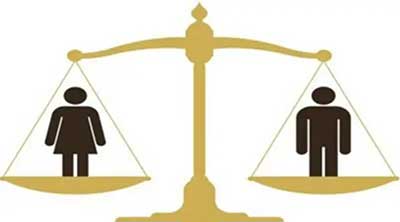Date: 19/12/2022
Relevance: GS-1: Women Empowerment and related Issues; Gender Equality.
Relevance: GS-2: Education and Skill Development.
Key Phrases: Global Gender Gap Index 2022, World Economic Forum, Digital Divide, Literacy Gap, Gender Disparity, Women Empowerment, Workforce, Gender-based Violence, Strategy for New India @75, Developed country status.
Context:
- India ranks 135 among a total of 146 countries in the Global Gender Gap Index 2022 and is the worst performer in the world in the “health and survival” sub-index where it is ranked 146. So gender equality becomes a crucial topic for discussion to address gender-based violence.
Key Highlights:
- India ranks 146 in health and survival, 143 in economic participation and opportunity, 107 in educational attainment and 48th in political empowerment.
- Although no country achieved full gender parity, the top 10 economies closed at least 80% of their gender gaps, with Iceland (90.8%) leading the global ranking.
- To date, most work on gender equality has focused on older people but early childhood is when we develop gender identities.
What is Gender Inequality?
- Gender inequality is the social phenomenon in which men and women are not treated equally.
- The treatment may arise from distinctions regarding biology, psychology, or cultural norms prevalent in the society. Some of these distinctions are empirically grounded, while others appear to be social constructs.
When and why do gender biases develop?
- Family
- The process begins in infancy when parents treat their baby daughters and sons differently.
- By the time they are five or six years old, most children identify strongly as a girl or a boy; they understand how they must dress and behave and that there are clear social rules that they must follow.
- Environment and Content
- The environment that children are raised in and the messages that they receive about gender wield a powerful influence on their developing identities.
- The main players in a preschooler’s environment are her family, her preschool or anganwadi, and the messages that she receives through content (books, digital games, nursery rhymes, TV, etc).
- In 2021, the survey, conducted by the Pratham Education
Foundation, concludes followings-
- Mothers were largely responsible for child rearing and Fathers’ long working hours meant that their time with children was limited so children were closer to their mothers.
- Mothers and fathers acknowledged that sons were indulged, and even though girls didn’t have the freedom boys enjoyed, daughters were viewed as mostly compliant, more mature and dependable.
- Mothers wanted their daughters to have opportunities that they never had and to eventually be equipped to fend for themselves.
- All parents said that they wanted to educate daughters and sons equally, though they were generally vague about what their children would do as adults.
Global Gender Gap Index
- The Global Gender Gap Report is an index designed to measure gender equality.
- It was first published in 2006 by the World Economic Forum.
- The Global Gender Gap Index benchmarks gender parity across four key dimensions or sub-indices — economic participation and opportunity, educational attainment, health and survival, and political empowerment.
- It measures scores on a 0 to 100 scale, which can be interpreted as the distance covered towards parity or the percentage of the gender gap that has been closed.
How can we address them?
- The spectre of unsafe spaces was used to control women so women should learn to navigate these spaces, making them their own.
- Equality in wages regardless of gender should be promoted for the overall development of the women because aside from financial gain, working outside the home brought engagement with the world and intellectual stimulation.
- Gender neutral stories should be included in the curriculum such
as fathers in nurturing roles, differently abled children, and girls as main
characters.
- Recent children’s books do better. Most books published by popular publishers feature girls and boys equally as main characters who are curious, kind and solve problems.
- Despite some small steps in the right direction, children are
still exposed to many gender-discriminatory messages.
- Young children can influence family members and others in their circles. Thirteen per cent of India’s population is between 0- 6 years old.
- If these children are exposed to gender-equal environments, they can potentially bring about significant change. Therefore, Work on gender equality must include them too.
Way Forward:
- There is a global push for gender-transformative education in early childhood and gender equity is a guiding principle in the National Curriculum Framework.
- These are welcome steps but there’s an urgent need for a multifaceted approach to creating gender-equal environments, an approach that includes policies and practices that help fathers be equal caregivers to their children, gender-equal programmes in schools and communities, and lots of fun, gender equal content for children.
Conclusion:
- Bridging the gender gap with the active role of young children is necessary for countries’ inclusive and sustainable development which will be a cornerstone for achieving developed country status by 2047.
Source: Indian Express
Mains Question:
“Bridging the gender gap in different dimensions of life has the potential to change the status of women in the society”. Comment (150 Words)






















